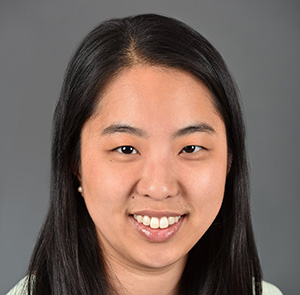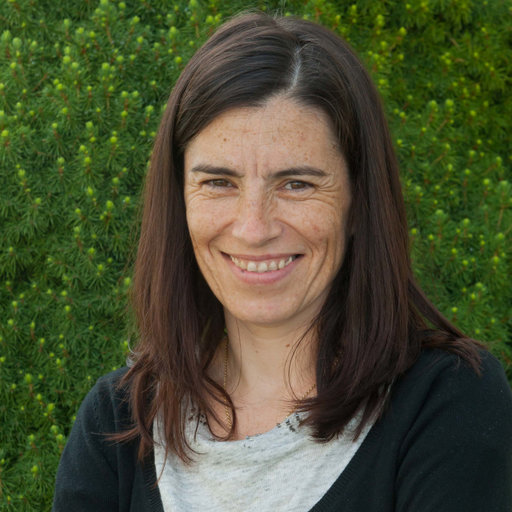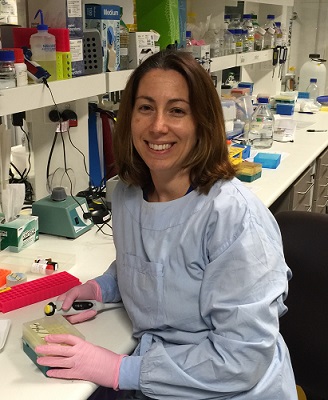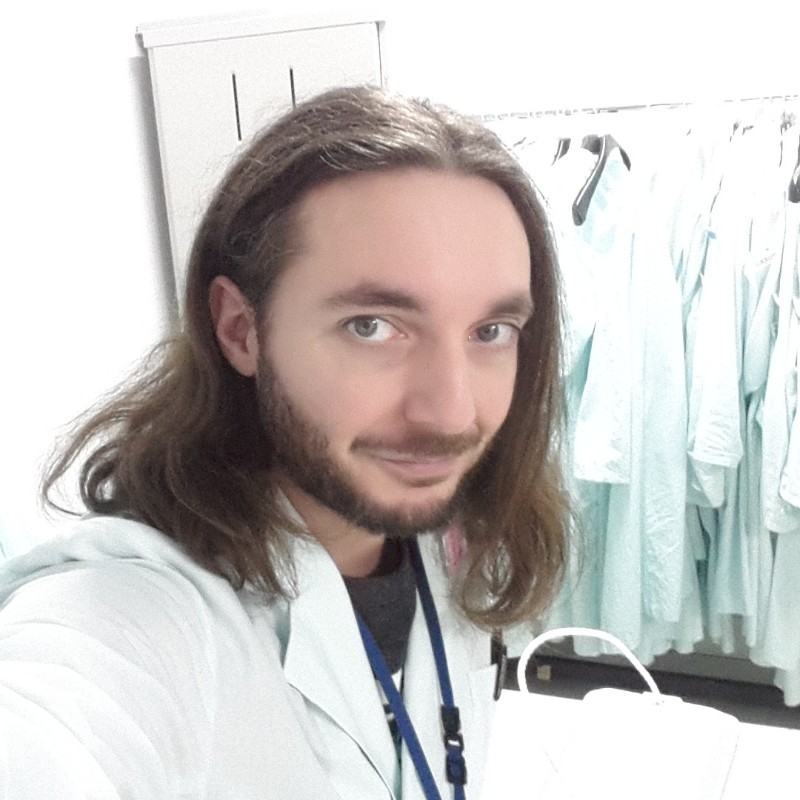Grants
The DIPG / DMG Collaborative has funded $20,022,524 in DIPG/DMG research.
Interested in applying for a grant from the DIPG / DMG Collaborative? Learn more.

The Institute for Medical Research Israel-Canada – $40,000 USD / 143,580 INS
$40,000.00
December 2024
CXCR1/2 Signaling Pathway: A Role in the Invasive Mechanism of DIPG
High-grade gliomas (HGGs) make up 8-10% of children's brain tumors and are often fatal within two years. These tumors can develop in the cerebral cortex or infratentorial regions like the brainstem. About half of pediatric HGGs occur in midline locations such as the pons, known as diffuse midline gliomas (DMGs), including DIPGs. High-grade gliomas show distinct patterns, with DIPGs typically developing in mid-childhood. DIPGs are highly invasive, making understanding what drives this process to create effective treatments essential.
Our research has shown that, unlike cortical HGGs, DIPGs grow and spread more when implanted into brainstem tissue compared to cortical tissue. Additionally, brainstem microglia (support cells in the brain) enhance the growth and spread of brainstem tumors more than cortical microglia do. This indicates that specific factors in the brainstem environment support DIPGs.
We have identified several genes that are differently expressed between the brainstem and cortical microglia, including CXCL5. This gene is part of the CXCL-ELR+ family, which interacts with the CXCR1/2 receptors and is known to influence cell movement and cancer cell invasion, including in gliomas. Our initial findings suggest that the CXCR1/2 pathway may play a role in DIPG invasion.
With this grant, we aim to test how the CXCR1/2 pathway and related factors contribute to DIPG growth and spread. We will also evaluate whether the key players in this pathway could be potential targets for new DIPG treatments.
Our ultimate goal is to translate these findings into clinical trials, offering new hope to children and families affected by this devastating disease. By supporting our research, you are contributing to the development of targeted therapies that could revolutionize the treatment landscape for DIPG.

Children's Hospital Los Angeles – $100,000
$100,000.00
October 2024
Targeting FOXR2 in Diffuse Midline Gliomas
Diffuse midline glioma (DMG) is a deadly pediatric brain cancer. Despite radiation treatment, nearly all children diagnosed with the disease succumb to it with a median survival of 12 months. There have been few advancements in treatment, and current treatment has no curative intent. Therefore, there is a significant need to develop new therapeutic strategies to improve the terrible outcomes for these children and improve quality of life for patients and their families. Looking at genes that are turned on or off in a particular type of cancer can be helpful to figure out what is causing the cancer to grow. One such gene which we found to be turned on in DMG is FOXR2. Interestingly, FOXR2 is normally turned off in normal brain. We have previously studied how FOXR2 is turned on and off. When it is turned off, DMG cancer cells die. In this project, we will study how to turn FOXR2 off using small interfering RNA (siRNA) that can be delivered to the brain tumor. We will use patient DMG cell models as well as mouse models of DMG. Ultimately, our goal is to determine whether we can target FOXR2 in DMGs to improve outcomes for children and their families impacted by this terrible disease.

University Hospital of Navarra - $100,000 USD, €92,637 EUR
$100,000.00
October 2024
Targeting Diffuse Midline Glioma vulnerabilities as a therapeutic strategy.
Diffuse Midline Gliomas (DMGs), including Diffuse Intrinsic Pontine Gliomas (DIPGs), are among the most aggressive pediatric brain tumors and the leading source of mortality in pediatric oncology. The median life expectancy of these children remains below 14 months after diagnosis, and nearly none survive beyond the second year. All therapeutic approaches have failed, leaving radiation therapy as the sole palliative treatment that transiently ameliorates the disease. Therefore, finding a curative and feasible alternative for these children is of the utmost importance. Delta-24-RGD is an oncolytic adenovirus genetically modified to replicate and kill tumor cells selectively while remaining harmless in normal tissues. This biotherapeutic agent has been recently tested in a small number of DIPG patients, validating its safety and showing clues of efficacy. In addition, analysis of patient samples demonstrated the effect of Delta-24-RGD in activating the patient’s immune response against the tumor. Unfortunately, the effect was only transitory, and all patients recurred. Additional genetic modifications of Delta-24-RGD have been explored to potentiate its anti-tumor effect, such as incorporating immunostimulatory transgenes. Despite these upgraded viruses being more efficient in promoting anti-tumor responses, the effect cannot be curative in all subjects. Here, we propose to refine the design of modified oncolytic viruses by considering the intrinsic peculiarities of DMGs. We will arm this virus with molecules that have the capability to trigger effective antitumor immune responses while maintaining a safe profile. At the end of the project, we expect that the results yielded by this project will show a new, innovative, and efficient therapeutic approach based on oncolytic viruses for DMGs while maintaining a safe profile. These data should place us in a strong position to translate to the clinical scenario a new therapy for children with DMGs, and we expect to find that it offers these children a curative, safe, and feasible alternative.

The Institute of Cancer Research – $111,445 USD / £85,976 GBP
$111,445.00
October 2024
Unravelling transcriptional plasticity as a non-genetic mechanism of drug resistance in DMG.
Diffuse midline glioma (DMG) is a malignant brain tumour arising in children representing a major unmet clinical need, with a 2-year survival rate close to zero. We and others have found that some DMGs have alterations in the MAPK pathway which drives cell growth – drugs targeting this pathway may be initially effective, but eventually the cancer cells escape therapy. We have used DMG cell models to show that this drug resistance can occur in a new way, in which cells slow down and ‘hide’ from drug treatment by temporarily changing their make up in a way that makes the drug ineffective. Having shown that this can occur, we now wish to learn more about DMG cells pull of this trick, by growing them in the lab and determining the precise mechanism that allows them to tolerate exposure to drug. Having done so, we hope to find ways of overcoming it that might be a useful and much-needed therapeutic strategy for children with these tumours.

Children’s Cancer Institute – $100,000 USD / $150,589 AUD
$100,000.00
October 2024
Targeting lactate production pathways as a novel therapy against DIPG
Cancer cells secrete lactic acid, creating an inhospitable glucose-poor and lactate-rich tumor environment that would otherwise be lethal to most cells. Recent advances trying to understand DIPG development demonstrated that lactic acid was three times higher in DIPG cells. Furthermore, our laboratory found that the enzyme which makes the lactic acid is higher in tumor tissues analyzed from children with DIPG compared to other lower grade brain tumors. We have identified two non-toxic drugs which reduce lactic acid in DIPG cells. We found that blocking the over-production of lactic acid with these novel chemotherapies, significantly decreased the growth of DIPG cells, with one therapy even curing mice with DIPG.
Our work suggests that DIPG tumors are addicted to high secretions of lactic acid.
With this grant we will test novel, non-toxic drugs that block lactic acid over-production in animals with DIPG tumors. We will also characterize how lactic acid enables DIPG cells to be more aggressive by changes to DIPG DNA structure.
Although lactic acid is greatly over-produced by DIPG cells, it’s unclear what advantage the lactic acid gives to the DIPG tumor cells, because its yet to be investigated. We do have clues from experiments performed in adult cancers. Importantly, in other cancers high lactic acid in tumors promoted the immune escape of tumors and radiation resistance. Lactic acid even decreases the effectiveness of emerging therapies such as CAR-T cells in glioblastoma.
Lactic acid is likely an underlying general resistance mechanism in DIPG which is easily targeted with existing drugs. Giving hope that by reducing lactic acid in DIPG, children would respond better to currently trialed and emerging DIPG therapies, such as radiation or CAR-T.
Our strategy targets a well reported DIPG characteristic that scientists have not investigated yet. We believe that targeting lactic acid over-production in DIPG is a feasible and novel treatment against DIPG, with the drugs already available and protocols for their use in children already available.
So why are we interested in lactic acid production? We discovered that H3K27M mutated DIPG cells are more sensitive to a copper depletion drug (copper chelator) compared to non-mutated DIPG. Amazingly we found that copper depletion cured 25% of mice bearing the common H3K27M mutated DIPG, as well as increased mouse survival. We demonstrated for the first time that copper depletion has an anti-DIPG cancer effect, which crosses the blood brain barrier and is non-toxic. We performed follow-up work trying to understand why the copper chelation was working against the DIPG cells. These experiments showed that the copper chelator was changing the metabolism in the cells. Specifically, copper chelation was blocking lactic acid production and changing downstream lactic acid effects on DNA structure. We realized there are no studies yet investigating lactic acid effects in DIPG, especially looking for any changes to DNA structure, which is known to be uniquely important in DIPG. Thus, our proposed work could help explain why these mutations lead to DIPG. Normal tissue in the brain is not dependent on copper and lactate over-production at the levels observed in DIPG tumors. Thus, our investigations could provide a novel therapeutic target that would only target cancer tissues and not the surrounding healthy tissue in the brain.
Copper chelation and lactate production drugs are used against other diseases already. The glycolysis pathway has a plethora of drugs available that are active in humans, and in other cancers such drugs are already being utilized in clinical trials. Copper chelation is already given orally to kids with genetic diseases and FDA approved. Thus, our treatment strategies could be easily incorporated into clinicals trials, because we already have information regarding what amounts are safe and effective for use in children. Note that the equivalent same amounts safely given to children with genetic diseases, we have shown to cure some mice with DIPG.

Sydney Children's Hospital - Randwick – $196,577 USD / $296,025.11 AUD
$196,577.00
October 2024
Unlocking the potential of the blood-brain barrier in the fight against paediatric brain gliomas.
Despite considerable research efforts, brain tumours persist as the leading cause of death among children. A significant obstacle in treating these tumours is the blood-brain barrier (BBB), a protective barrier surrounding the brain that typically restricts the passage of therapeutic agents. Of particular concern is Diffuse Midline Glioma (DMG), a childhood brain tumour notorious for its resistance to treatment due to its location and the unyielding nature of the BBB. Our research team has made a critical observation: as DMG progresses, the BBB remains impermeable, exacerbating the difficulty of delivering anticancer drugs to the tumour site. Furthermore, we have uncovered alterations in specific signalling pathways within the brain's blood vessels induced by the tumour, contributing to the fortification of the BBB. Excitingly, we have identified a promising approach to counteract these mechanisms using clinical drugs targeting these pathways, potentially weakening the BBB's defences. Our strategy entails a comprehensive investigation into the mechanisms governing BBB function in DMG, with the aim of identifying modulators capable of enhancing its permeability. We will test BBB modulators in DMG preclinical models to evaluate their potential to enhance the penetration of anticancer agents. Our goal is to improve the treatment options for DMG patients.
This project will build upon our prior discoveries and new insights that will be obtained from advanced molecular analyses of preclinical DMG models. We will pinpoint safe BBB modulators capable of opening the barrier. Subsequently, we will assess the efficacy of these modulators in conjunction with anticancer agents in preclinical DMG models. We believe this is a unique approach that will open the opportunity for many currently used drugs (chemotherapy or targeted agents) with limited brain penetration to be finally employed as treatments for children with DMG. Furthermore, this approach has the potential to improve the treatment options for other brain malignancies. Our team, a collaborative effort of researchers and clinicians with diverse expertise in this area of research, is united in our commitment to combatting this devastating disease. Through these collective efforts, we aspire to develop improved treatment modalities for children afflicted by DMG, offering them renewed hope for a brighter future.

McGill University - $100,000
$100,000.00
October 2024
Understanding tumor heterogeneity and characterizing treatment responses in ACVR1-mutated diffuse midline gliomas.
Diffuse midline gliomas (DMGs), sometimes called diffuse intrinsic pontine gliomas (DIPGs) are aggressive brain tumors that occur in children. There is currently no cure for these cancers. DMGs occur because genetic defects appear in some cells in the brain during childhood. Researchers and doctors have identified many of these genetic defects. However, we still do not fully understand how they lead to tumor formation. Furthermore, at the molecular level, DMGs can be quite different from one another. Children diagnosed with DMGs that look similar at first glance, may in fact have tumors that carry distinct genetic lesions. These may affect how fast the tumors grow, and how they respond to therapies. Therefore, it is important to identify treatments that may work best for specific patients. To achieve this, we need better DMG models that reflect the disease variability. Here, we will create mouse models of different DMG subtypes. We will study how the tumors are similar or different from each other. Using our mouse models, we will test the efficacy of a drug that could be particularly useful in specific patients. Overall, we expect that our findings will help the development of better treatments for DMGs.

Children’s Cancer Institute – $50,000
$50,000.00
December 2023
A novel formulation to allow the simultaneous targeting of MYCN expression and copper chelation to treat DIPG tumour and overcome multidrug resistance.
Introduction:
The aim of this proposal is to develop potential treatments for Diffuse Intrinsic Pontine Glioma (DIPG), a highly aggressive brain tumour primarily affecting pediatric patients. DIPG remains a significant challenge in the medical field, with limited treatment options and poor survival rates. To address this critical issue, we have been working on developing a novel delivery system that aims to enhance the effectiveness of drugs and RNA therapeutics specifically targeted to DIPG tumour cells. By improving drug delivery and minimizing toxicity, we hope to revolutionize DIPG treatment and significantly improve patient outcomes.
The Need for a Better Delivery System:
Conventional treatment methods for DIPG have shown limited efficacy due to the difficulty in delivering therapeutic agents into the brain and directly to the tumour. Many drugs and RNA therapeutics struggle to penetrate into the brain and effectively reach the tumour cells, leading to suboptimal outcomes. This calls for the development of a targeted delivery system that can efficiently transport drugs and RNAs to the cancer cells while minimizing side effects.
Introducing a Novel Delivery System:
In my research, we have been working on a breakthrough delivery system that utilizes the power of red blood cells (RBCs) as carriers for therapeutic agents. By harnessing the unique characteristics of RBCs, we can optimize drug and RNA delivery to DIPG tumour cells, resulting in improved treatment efficacy.
Enhanced Targeting and Reduced Toxicity:
The use of RBCs as delivery vehicles offers several advantages. Firstly, by functionalizing the surface of RBCs with specific adapters, we can enhance the targeting ability of the delivery system, ensuring that the therapeutic agents reach the intended cells.
Furthermore, the use of RBCs significantly reduces off-target toxicity. By encapsulating drugs and RNA therapeutics within the RBCs, we can shield them from premature degradation and clearance by the immune system. This not only improves the stability of the agents but also minimizes the risk of adverse effects on healthy tissues and organs.
The Potential of Personalized Medicine:
One of the most exciting aspects of our delivery system is its potential for personalized medicine. By utilizing RBCs derived from the patient's own blood, we can customize the delivery system for each individual and tailor it to accommodate different therapeutic agents. This personalized approach maximizes treatment effectiveness and minimizes the risk of adverse reactions.
Clinical Implications and Future Directions:
Our research paves the way for a paradigm shift in the treatment of DIPG and potentially other cancers. By enhancing drug and RNA delivery, we can overcome the challenges associated with current treatment modalities. The improved efficacy and reduced toxicity of our delivery system offer hope for better patient outcomes and prolonged survival rates.
Moving forward, we aim to conduct further preclinical studies to optimize the delivery system and validate its efficacy in animal models.
Conclusion:
In conclusion, our research focuses on developing a novel delivery system utilizing red blood cells as carriers for drugs and RNA therapeutics to improve the treatment of DIPG tumour. This innovative approach enhances targeting capabilities, reduces toxicity, and holds promise for personalized medicine in cancer treatment. By overcoming the limitations of current therapies, we strive to make a significant impact on the lives of DIPG patients and potentially transform the landscape of cancer treatment.

University of Newcastle – $116,997 USD, 173,016 AUD
$116,997.00
December 2023
(2023) Enhancing the recruitment of tumor infiltrating lymphocytes to improve responses to DMG therapies.
ABSTRACT
Diffuse midline glioma (DMG) including those within the pons (diffuse intrinsic pontine glioma [DIPG]) is the most lethal form of childhood cancer with a median overall survival of 9-11 months, and a 5-year survival <1%. DMG represents 20% of all pediatric cancer deaths, with no recognized treatments other than radiotherapy, highlighting the urgent need to progress innovative approaches. Immunotherapies have dramatically improved outcomes in other aggressive cancers, including melanoma patients with brain metastasis. However, immunotherapies such as immune checkpoint inhibitors (ICIs), have not shown clinical benefit in DMGs, likely due to a lack of immune cells in or near the tumor located in the central nervous system (CNS). Studies in other brain tumors that show untreated brain cancer patients experience immune suppression (T cell lymphopenia) as their T cells are sequestered within the bone marrow. We have powerful data showing that ONC201 promotes release of immune cells from the bone marrow, and makes DMGs more visible to the immune system, which, in combination with the drug paxalisib, recruits immune cells to the tumor. Furthermore, two patients receiving ONC201 and paxalisib over a 16-month period showed dramatic reductions in tumor volume and increased survival that we attribute to an immune response. This project will identify if untreated DMG patients experience lymphopenia. We will also determine whether ONC201 in combination with paxalisib promotes an immune response to help fight the tumor, and identify how we can further promote the function of the immune system to improve DMG outcomes.
LAY SUMMARY
DMGs harbor a ‘cold’ tumor microenvironment (TME), meaning few, if any, immune cells are in the immediate vicinity of the tumor. The absence of these immune features likely explains why antibody-based immunotherapies have not delivered a benefit for DMG patients, that has been seen in other cancers. We believe that the cold TME of DMG is promoted by DMG patients experiencing T cell lymphopenia (yet to be confirmed). In adults with glioblastoma (another aggressive/lethal brain cancer), T cells are confined within the bone marrow, unable to enter the bloodstream and hence the brain, and therefore the tumor is immunosuppressed even when treated with immunotherapies. This has been shown to be influenced by the protein ‘Beta-arrestin’ which becomes activated in T cells in the bone marrow, stopping their egress into the circulation. This phenomenon has also been shown in traumatic brain injury patients, where sepsis is the most frequent cause of death due to the body not being able to mount an immune response to infection. Although the mechanisms of immune suppression for glioblastoma patients and patients with brain injuries is not resolved, we believe the peripheral nervous system (PNS) is playing a role as it is implicitly linked with the immune system.
Our team have been studying the anti-DMG effects of the DRD2 antagonist ‘ONC201’ for four years. Our preclinical studies underpin the phase II, international, adaptive clinical trial ‘Combination Therapy for the Treatment of Diffuse Midline Glioma’, which is evaluating the effect of radiotherapy (RT) in combination with ONC201, or the PI3K/Akt inhibitor paxalisib, and, ONC201 + paxalisib as a maintenance therapy following the completion of RT.
Our studies show that:
i) ONC201 reduces beta-arrestin signaling, potentially aiding in the escape of T cells from the bone marrow.
ii) Treating DMG with ONC201, increases expression of immune recognition molecules on DMG cells, amplified when co-treating DMG cells with paxalisib.
iii) The combination of ONC201 with paxalisib promoted recruitment of immune cells to the tumor of mice engrafted with human DMGs, suggesting that the combination treatment illuminates the DMG to the immune system.
iv) ONC201 treatment of DMG mice with a functional immune system dramatically extended survival, compared DMG mice without a fully functioning immune system, suggesting a potential immune involvement in the response to ONC201 treatment.
v) Two DMG patients who are/have receiving/ed ONC201 in combination with paxalisib following compassionate access show a dramatic reduction in tumor burden, improved neurological functioning and increased progression free and overall survival.
We believe that ONC201, in combination with paxalisib, promotes the anti-cancer activity of T cells which is key to ONC201/paxalisib’s anti-DMG effects. We believe this only occurs in patients not receiving dexamethasone, a potent immunosuppressor prescribed to many/all DMG patients to reduce symptoms caused by brain swelling. This project seeks to understand/confirm whether DMG patients experience lymphopenia (reduced immune system function), and to enhance the immune-mediated, anti-DMG response to ONC201/paxalisib. In doing so, we will provide important new information on how we can enhance the benefit of therapies already in clinical trial (NCT05009992) and how we may bring the benefits of immune-based therapies (such as immune checkpoint inhibitors or CAR-Ts) that have been seen in other cancers, to the DMG community.

Princess Máxima Center for Pediatric Oncology – $98,306
$98,306.00
December 2023
Assessing the potential of the HDAC inhibitor givinostat ± radiotherapy for the treatment of diffuse midline glioma.
Pediatric brain tumors are the most frequent childhood solid tumors, and the leading cause of cancer related death in children. Patients with a diffuse intrinsic pontine glioma (DIPG) or midline glioma (DMG) – located in the brainstem, thalamus, or spinal cord – have a particularly bad prognosis. These tumors often cannot be surgically removed and to date, treatment with several types of chemotherapy has not been effective. Radiotherapy, the other cornerstone of cancer treatment, only temporarily alleviates symptoms without leading to cure. Thus, to develop an effective treatment for this patient group we will need to combine different forms of treatment, such as radio- or immunotherapy, a treatment in which the patient’s own immune system is used to fight the tumor.
In this project, we will study the effect of givinostat, a drug used in the treatment of children suffering from Duchenne muscle dystrophy, in combination with radiotherapy on DIPG/DMG in specially developed mouse models. Besides looking at survival benefit of this treatment, we will also study the immunological changes in the tumor and its surrounding healthy brain tissue. By mapping these changes, we can identify additional therapeutic targets to be used in future treatment combinations that include chemo-, radio- and immunotherapy.
We think that such a combinational treatment may be needed to tackle hard-to-treat cancer types like DIPG/DMG. Previous experiments from our laboratory have shown that very low doses of givinostat can kill DIPG cells growing in a dish and that this drug can enhance the effect of radiotherapy. As such, we anticipate that givinostat + radiation will enhance survival when tested in DMG-bearing mice. Yet, this combination may still not be sufficient for cure, as DIPG cells have been shown to escape treatment by switching to alternative survival strategies. Previous experiments also showed, however, that givinostat treatment (on itself) induces an increase of immune cells in the tumor, which may allow for the use of immunotherapy as an additional therapeutic option. Together, these results open the door for immunochemotherapeutic combinations that ultimately may lead to an increased progression free- and overall survival of DIPG/DMG patients.

Nemours Children’s Hospital - $50,000
$50,000.00
December 2023
Treatment of Diffuse Intrinsic Pontine Glioma with the Oncolytic Zika Virus.
Diffuse intrinsic pontine glioma (DIPG) is a devastating brainstem tumor affecting 150-300 children in the US per year. The overall rate of survival is dismal, with only 10% of children surviving beyond the second year from the time of diagnosis.[1] Though a rare tumor with high mortality, DIPG represents 80% of pediatric brainstem tumors.[2] One of the challenges in treating DIPG is its location in the pons and the relative protection of the blood brain barrier. Despite advances, treatment for this aggressive tumor remains ineffective highlighting the absolute need for a novel therapy. Our laboratory has identified Zika virus as an innovative oncolytic virus that is cytotoxic to DIPG cells in culture as well as in DIPG tumors grown in mice. In order to explore this viable alternative therapy for DIPG, we examined related tumors and their treatment advances. One of these related tumors is neuroblastoma, which is also a childhood cancer that occurs along nervous tissue and the adrenal glands. Our published data established that neuroblastoma cells are killed by Zika virus. Furthermore, we validated a survival advantage for mice growing neuroblastoma tumors after treatment with Zika virus: all mice with neuroblastoma tumors revealed a complete loss of tumor mass after Zika viral injection therapy. Our findings in neuroblastoma apply as a therapy for DIPG because of the similarity of their cellular origin. Recently, a new method delivered a modified adenovirus directly into the pons of children with DIPG followed by radiation, resulting in a 33% survival rate at 20 months.[3] Although this confirms that direct viral delivery can be a feasible approach for treating DIPG, the adenoviral vector did not improve overall survival. This is where Zika virus can emerge as an effective therapy. We envision using a similar direct delivery protocol, but using Zika virus, which is far more cytotoxic to DIPG, yet remains considerably safer than adenovirus to the patient and require no use of radiation.
Because of a common cell lineage between neuroblasts and glial cells, we tested and confirmed that a single application of Zika virus killed >90% of both cell lines and patient derived DIPG cells in culture. In our preliminary mouse study, we successfully treated DIPG tumors grown on the mouse hindleg leading to greater than >90% loss of tumor mass with no side effects to the mice. As a result, we are pursuing the DIPG Collaborative Award to characterize the Zika viral killing of DIPG tumors grown directly in a mouse brain and investigate the requirement of the antiviral Type I interferon pathway in Zika viral cell death with our eventual goal aiming towards a phase 1 clinical trial.

Icahn School of Medicine at Mount Sinai - $100,000
$100,000.00
December 2023
Preclinical evaluation of TP-0184 in an autochthonous mouse model of DIPG/DMG
Evaluation of new cancer drugs, and determining which models best predict whether the new cancer drug will benefit children with DMG/DIPG is unclear. DMG/DIPG tumor cells have complex interactions with cell types normally found in the brain. Therefore, new therapies must be evaluated in animal models where DMG/DIPG tumor cells arise in the brainstem. There are several types of DMG/DIPG models:
1. Using cells from patients with DMG/DIPG. This model requires mice without an immune system.
2. Introducing DMG/DIPG specific genetic alterations into normal mouse brainstem cells. This model has more heterogeneity.
3. Using tumor cells from model #2 but injecting the tumor cells into a new mouse with a normal immune system to minimize heterogeneity.
TP-0184 is a drug with multiple targets, such a cell surface receptor called ACVR1 (overactive in 25% of DMG/DIPG tumors) and two other targets JAK2 and ALK5. These targets or the molecules that activate them are expressed in immune cells, so evaluation in models with a normal immune system is critical. Therefore, we will evaluate TP-0184 in models #2 and #3. We expect that TP-0184 will work in model #3 but not #2 and we will examine mechanisms of resistance to model#3

The University of Alabama at Birmingham – $100,000
$100,000.00
December 2023
Intranasal Delivery of Targeting Nanotherapeutics for DIPG
Pediatric gliomas are one of the most common cause of cancer-related death in children, and diffuse intrinsic pontine gliomas (DIPGs) are the most rapidly fatal of these tumors. No significant advances in the survival of patients with DIPG have been made over the last few decades, and new therapeutic approaches are desperately needed.
The infiltrative nature together with delicate tumor location in the brainstem precludes surgical resection, and the blood-brain barrier (BBB) prevents to deliver most drugs to the brain. To overcome this barrier, we will employ an innovative and effective drug delivery, intranasal delivery. Intranasal delivery is a practical, noninvasive method of bypassing the BBB to deliver drugs to the brain using unique anatomic (nerve) connection between nose to the brain, reducing unwanted systemic toxicity, and is amenable to self-administration by patients.
Intranasal delivery (IND) can be optimized by using nanoliposomal drug carriers which provide stable encapsulation of the drug and improve nasal penetration. To increase the specificity of liposomal drug delivery, immunoliposomes, which coated with antibodies on the surface of liposomes, can increase delivery of the drugs into the tumor cells, and reduce toxicity to normal cells. The primary goal of this project is to integrate IND with the targeted nanotherapeutics, leading to increase drug concentration in brainstem tumor without harming healthy brain tissues.
We have generated PDGFRA-antibody coated nanoimmunoliposome, because PDGFRA (Platelet-Derived Growth Factor Receptor Alpha) plays a role in DIPG growth and expresses in as much as 70% of DIPG. We found greater uptake of PDGFRA coated nanoliposome into the DIPG cells than that of non-coated nanoliposome.
Unlike adult glioma, DIPG is uniquely characterized by histone gene mutation, which causes enzymatic modification in the histone protein, which in turn, increases gene expression. DIPG has shown sensitivity to enzyme-targeted therapies, those targeting EZH2, the enzyme increases histone methylation. Unfortunately, the clinical efficacy of systemically administered (i.e., intravenous injection) EZH2 inhibitors in children has been disappointing due to poor penetrance across the BBB. For this reason, we consider it of high importance to perform a pre-clinical study of IND bypassing the BBB for the effect on EZH2 inhibitor delivery to, and biological activity, against DIPG.
In this proposal, we will test the efficacy of IND of PDGFRA-naoimmunoliposomal-Tazemetostat, an FDA approved EZH2 inhibitor, using patient-derived DIPG animal models. In our preliminary study, PDGFRA-nanoimmunoliposomal-Tazemetostat showed greater inhibition of DIPG cell growth in compared to empty immunolipsome. We hypothesize that this new therapeutic approach will reduce systemic toxicity and increase drug distribution and efficacy for treating brainstem tumor in patient-derived DIPG animal model,
Furthermore, we will test a new intranasal device, SipNose, which has recently approved by FDA and being tested in clinical trials in children. Finally, our long-term goal is to use IND of nanotherapeutics in combination with radiation which is used routinely for the treatment of DIPGs. The data generated through this study could lay the foundation for a clinical trial of this approach in children, with the goal to improve clinical care and outcomes for children with this devastating pediatric brain tumor.

Children's Cancer Institute – $181,736 USD, $281,691 AUD
$181,736.00
November 2023
Targeting post-translational protein modification to halt Diffuse Intrinsic Pontine Glioma tumorgenicity
Diffuse intrinsic pontine gliomas (DIPG) are a devastating childhood brain cancer which are universally fatal. Currently DIPG remain incurable as no therapy has been developed that can target underlying processes involved in the pathogenesis of this disease. While key driver mutation have been identified (such as histone mutations), to date they have eluded effective therapeutic targeting. Citrullination, the conversion of arginine to citrulline, is an irreversible protein post-translational modification that changes the biochemical and functional properties of proteins. Protein citrullination occurs solely through the activation of the peptidylarginine deiminase (PAD) family of enzymes. At the heart of this proposal lies the novel concept that PAD activity is a pivotal event in and driving factor for DIPG tumorigenesis. Our hypothesis and supporting preliminary data introduce a paradigm shift away from the role of genetic mutations, offering alternative and tractable therapeutic strategies. Here, we now seek to highlight the role of, and include the irreversible protein post-translational modification of, citrullination as a causative event in DIPG, thus creating a new lens through which to view the oncogenesis and potential treatment of this disease.
Epigenetic dysregulation is recognised as a driver of DIPG pathogenesis, with the majority of patients exhibiting the main responsible histone mutation (H3K27M). While >80% of DIPG have this key genomic driver, the precise mechanism by which this leads to DIPG development remains undefined. Histones are a major target for citrullination and citrullination also occurs on non-nuclear proteins, many of which have potential functions in DIPG development. We have shown that pharmacological inhibition of PAD activity restores histone methylation, causing DIPG cell death through reactive oxygen species (ROS) activation of the unfolded protein response (UPR), with H3K27M DIPG particularly susceptible. We have developed and synthesised a novel blood brain permeable inhibitor of PAD activity that, when compared to the available tool compounds, demonstrates enhanced cytotoxicity against DIPG cultures. In addition to fully characterising the global changes within DIPG initiated through PAD inhibition, we aim to progress preliminary drug efficacy studies into our in vivo patient derived xenograft (PDX) models as a proof of principle towards a Phase I/II clinical trial, providing the necessary research pipeline towards an effective treatment for DIPG.
We aim to tease out the key and early events that drive pathogenesis in this disease, providing novel insights into new targets for therapeutic advantage, developing a platform of research to challenge and change the understanding of disease progression. The research proposed here will for the first time establish the role of citrullination in DIPG. We are taking the innovative step of using a combined multidisciplinary research team, from basic research scientists with a wealth of drug chemistry and cell biology knowledge, to lead clinicians on the forefront of DIPG treatment, a collaborative effort with a breadth of expertise that has the potential to facilitate breakthrough outcomes. By performing strategic studies focused on mechanistic outcomes, using advanced analyses encompassing innovative workflows and methodologies, our multifaceted approach will identify the global processes involved in DIPG development at both the transcriptional and post-translational level. The combination of our in vitro and in vivo studies on the efficacy of PAD inhibition within the setting of DIPG will provide a much-needed therapeutic option for the disease, positioning a lead compound for direct translation into the clinical setting. Through employing our detailed, comprehensive, and erstwhile underutilised analytical proteomics and metabolomics approaches within the setting of DIPG, we will greatly contribute to the overall understanding of the pathogenic processes involved in the disease, adding to the current scarcity of such information in the field. Hence, we have a clearly formulated plan to translate the knowledge and predictive insights gained from this research proposal, offering comprehensive advances that will categorically inform and influence ongoing DIPG therapeutic regimens.

Memorial Sloan Kettering Cancer Center – $100,000
$100,000.00
November 2023
CSF Cell-free Tumor DNA (CSF cfDNA) Liquid Biopsies for Pediatric, Adolescent, and Young Adult Patients with Primary Brain Tumors
Pediatric brain tumors are the leading cause of cancer-related death in children and adolescents [1]. Recent advances in molecular analysis have led to major improvements in diagnostic accuracy and prognostication for pediatric patients with brain tumors, allowing physicians to adapt available therapies to specific patient’s needs[2-4]. However, access to tumor tissue for molecular testing in these patients requires an invasive procedure, which can be high-risk and/or unfeasible depending on the anatomical location of the tumor. Furthermore, repeated tissue sampling to monitor therapy response or resistance is often not clinically advisable or risky. We have successfully developed a minimally invasive “liquid biopsy” clinical assay to detect circulating tumor DNA (ctDNA) in cerebrospinal fluid (CSF) of pediatric brain tumor patients[5]. We have previously shown that CSF ctDNA genomics captures the genomic and clonal architecture of brain tumors, which recently led to the securing of a CLIA certification for this assay[5, 6]. To enhance tumor diagnosis through molecular subclassification and guide therapeutic decision making for pediatric brain tumor patients using this minimally invasive approach, we established a Pediatric Brain Tumor Consortium (PBTC)-sponsored trial, with the goal of integrating CSF ctDNA liquid biopsies into the clinical care of pediatric brain tumor patients across the PBTC sites.
The PBTC consortium is composed of 17 of the leading pediatric cancer centers across North America. Our non-therapeutic protocol entitled “CSF Cell-free Tumor DNA (CSF ctDNA) Liquid Biopsies for Pediatric, Adolescent, and Young Adult Patients with Primary Brain Tumors” has been approved by the scientific review committee of the PBTC, the NIH’s Cancer Therapy Evaluation Program (CTEP) and the NIH’s Central Institutional Review Board (CIRB) and is expected to open at the first sites during summer 2023. This protocol is investigator-initiated, and hence we are requesting funding to cover the costs associated with CSF ctDNA sequencing to enable full execution of this pre-approved PBTC-sponsored study.